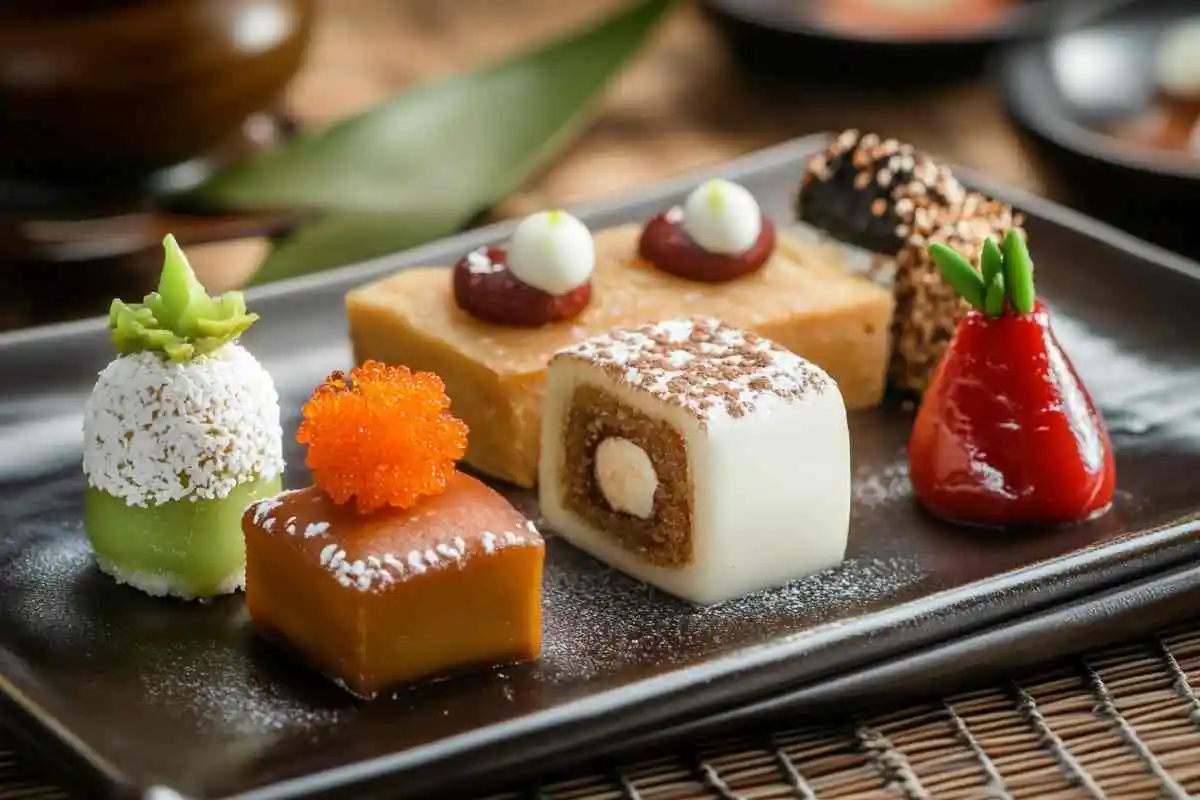The world of Asian cuisine desserts is as diverse and vibrant as the cultures they come from.
From chewy mochi to creamy mango pudding, each dessert tells a story of tradition, creativity, and an unparalleled love for sweet flavors.
Whether you’re exploring rich tropical treats like Thai mango sticky rice or indulging in the refreshing textures of Korean bingsu, these desserts promise an unforgettable culinary experience.
In this guide, we’ll take you on a journey through the fascinating world of Asian cuisine desserts.
Discover iconic sweets from different regions, learn about their cultural significance, and get inspired to try them at home.
If you’re a dessert lover, get ready to expand your palate and dive into the incredible flavors and textures that make these treats so beloved worldwide.
Let’s explore the sweet side of Asia!
The Rich Tapestry of Asian Cuisine Desserts
Desserts from Asian cuisines mix cultural influences and regional flavors. Each country adds its own ingredients. This creates a wide variety of Asian sweets that amaze people all over the world.
You might love the vibrant taste of matcha, coconut's rich sweetness, ube's unique creaminess, or pandan's aromatic touch. Each plays a big part in creating new Asian desserts.
This variety leads to inventive and heartfelt dishes.
From Japan's detailed wagashi to India's filling pastries, these dishes are special. They share the story of where they come from and welcome us to learn more.
Mixing old ways with new methods makes dessert more exciting. It challenges what we think we know about sweets.
As people around the world enjoy these dishes, Asian desserts become even more popular. This growth showcases the creativity of chefs.
They mix local and global tastes in new ways. This creates a never-ending story in the world of desserts.
Cultural Significance of Desserts from Asian Cuisines
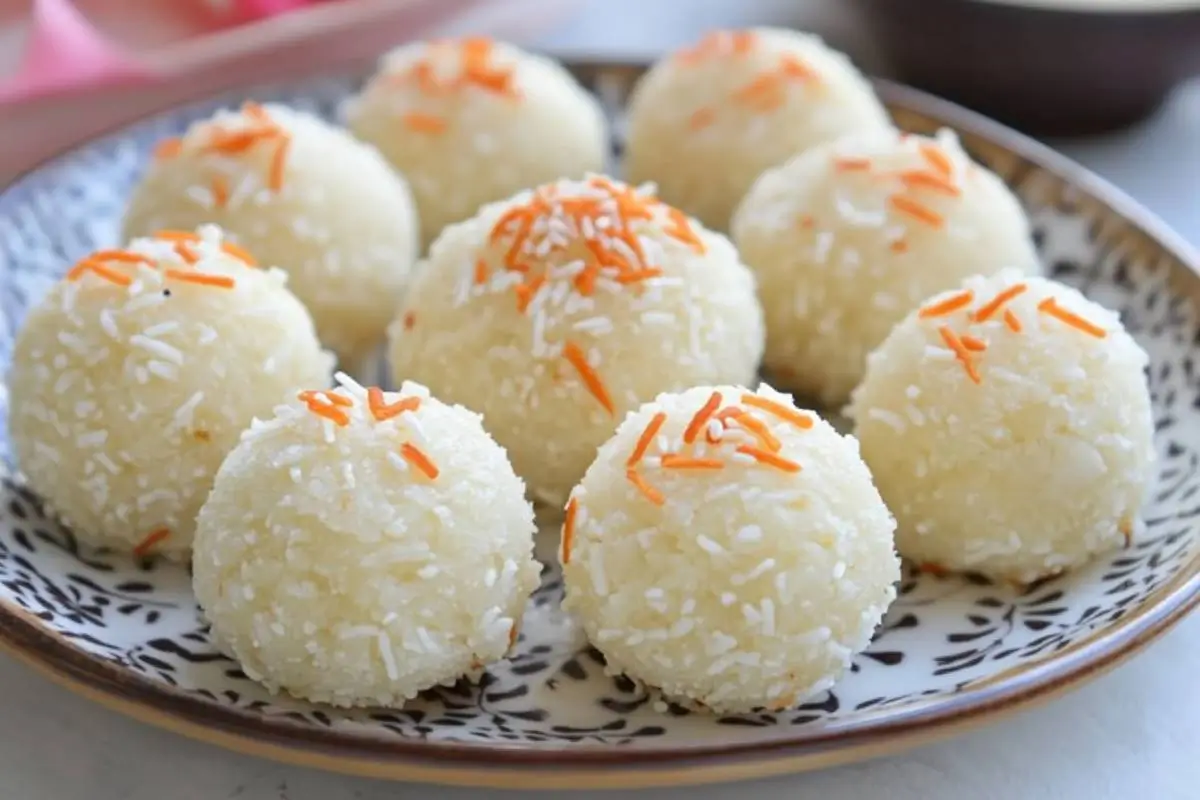
In Asia's lively cultural context, desserts are very important. They shine at festivals and family events. Each dessert has a story of joy, memory, or seasonal shifts.
For example, Zongzi are sticky rice treats made for unity.
They are vital at China's Dragon Boat Festival. These traditional Asian desserts do more than taste good. They link past and present generations.
At celebrations, these sweets stand out. They show shared happiness and personal tales passed down in families. At Buddhist events, colorful rice cakes mean good luck and success. They show their deeper role in the community.
The tastes and materials of these sweets share their cultural stories. Trying them lets you see their role in rites, traditions, and family warmth. They invite you to learn about Asia's special food stories.
Traditional Asian Desserts: Timeless Recipes to Explore
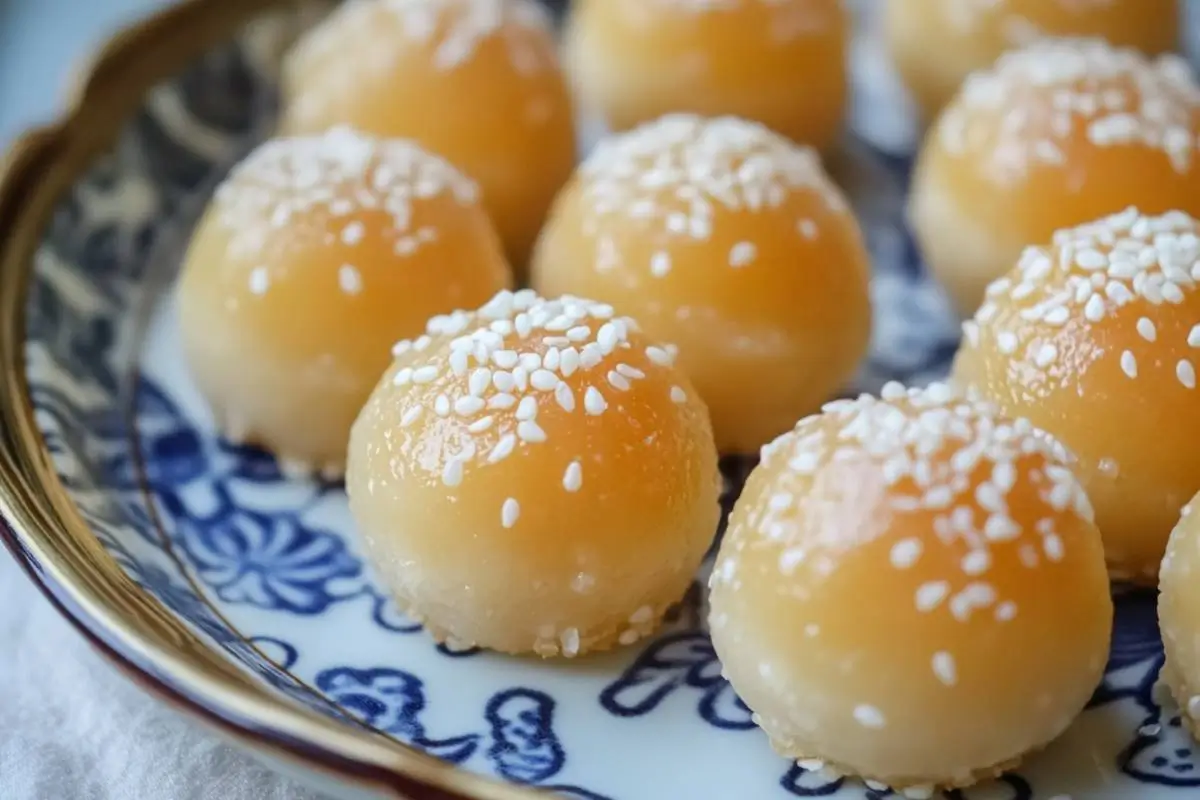
Exploring traditional Asian desserts is like opening a book full of colors, tastes, and stories.
These recipes are more than just treats. They carry the history and traditions of Asian communities.
Imagine tasting popular desserts from China, Japan, and the Philippines. Each one is a unique experience passed down through generations.
Popular Traditional Desserts Across Asia
In Asia, every country has its own sweet secrets.
For example, Thailand has mango sticky rice. It's a refreshing mix of ripe mango and sweet coconut rice. Japan offers treats like sweet red bean paste in daifuku and sakuramochi.
In the Philippines, you can enjoy velvety coconut pudding. This dessert really brings out tropical flavors.
Delving into traditional treats, you'll find mooncakes. They're special during the Mid-Autumn Festival. They symbolize family unity. These cakes are not just food; they’re art. They come with beautiful designs and various fillings.
Festive Desserts for Celebrations
Festive desserts are key in Asian celebrations.
Take Japanese dango, colorful rice dumplings. They're eaten during hanami, or flower viewing. It's a perfect snack for enjoying cherry blossoms.
Also, using seasonal ingredients in these desserts brings people together.
Exploring these desserts, you realize they've lasted through time. They remain favorites, made and shared during special times.
These sweets do more than just please your taste buds. They connect you to a deep cultural heritage.
Exotic Asian Desserts: A Taste Adventure
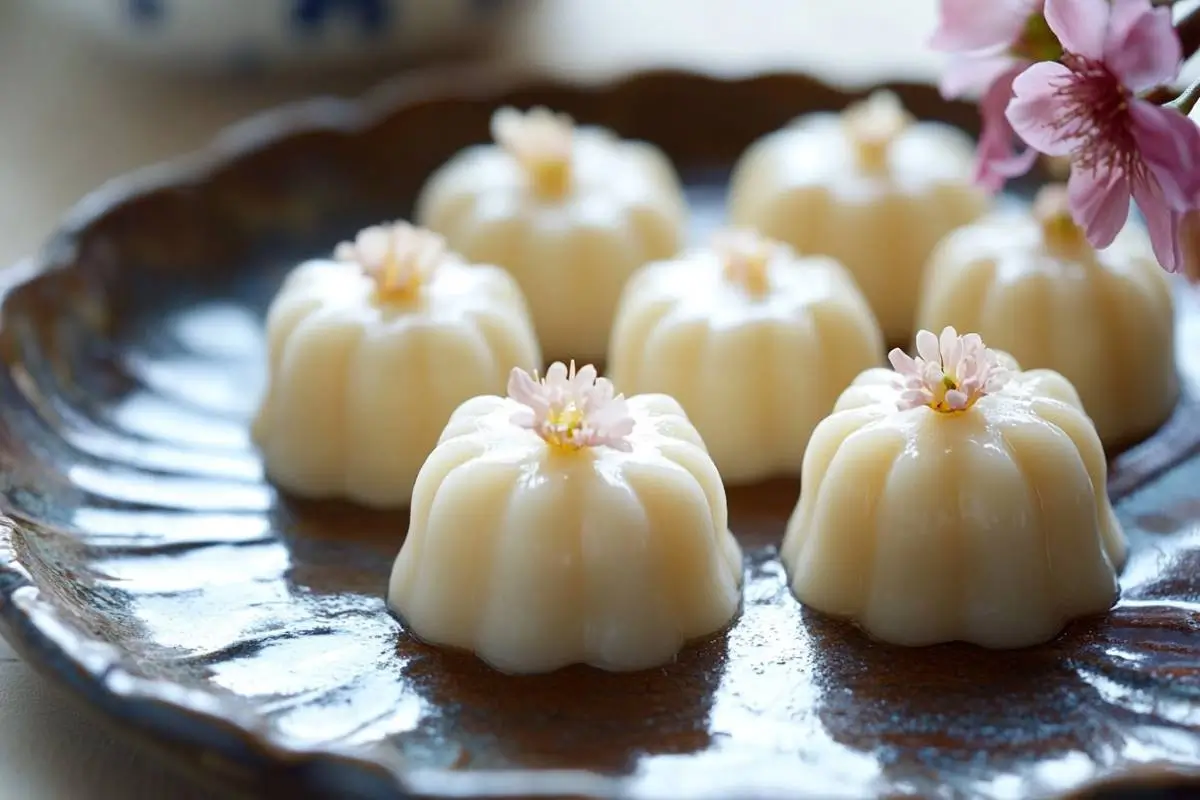
Explore exotic Asian desserts to discover unique flavors. Consider the vibrant chè khúc bạch from Vietnam. It's a colorful dessert soup that tastes refreshing. Made with coconut milk, jelly, and fruits, it's perfect for hot days.
In Sri Lanka, find the yummy falooda. This milky dessert layers sweet basil seeds, rose syrup, and vermicelli. It shows the wide variety in Asian culinary delights. Every layer adds to its irresistible mix of flavors and textures.
In Korea, bingsu is a summer must-have. It's shaved ice with sweet toppings like red bean paste and fruits. You can even add herbs. Exotic Asian desserts like this are great for those who love sweets.
You may also enjoy khanom kok from Laos, available at busy markets. Or try Mongolia's deep-fried boortsog, a treat for gatherings.
Desserts like Filipino halo halo mix many flavors beautifully. Then there's mochi and sweet rice with mango. These adventurous sweet treats will surely impress.
Asian Cuisine Desserts: Fusions and Innovations
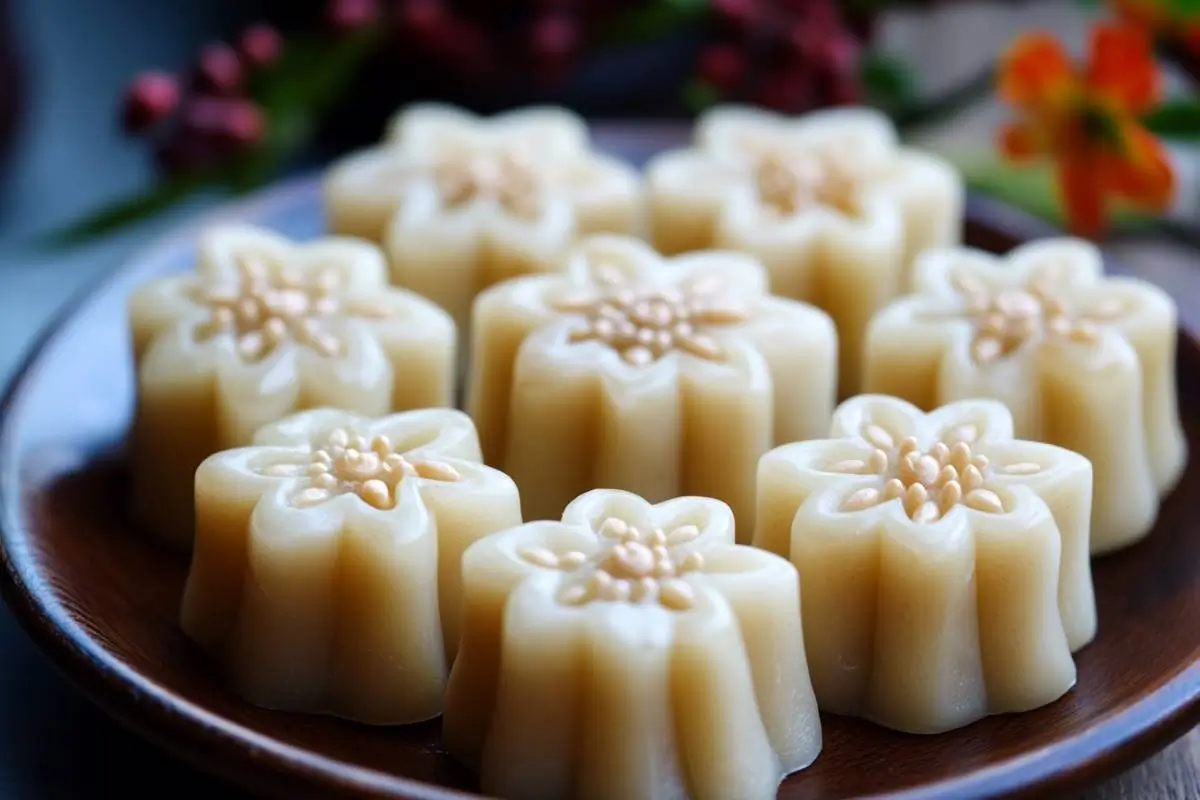
The world of Asian fusion desserts is a vibrant, evolving art form. Traditional sweets embrace innovative ingredients. Chefs merge time-honored techniques with contemporary flair, creating delightful flavors and textures.
Restaurants and dessert shops play a crucial role. They bring unique dishes that celebrate both heritage and innovation.
Modern Twists on Classic Recipes
Dessert cafes like Chao XO in National City lead in creating unforgettable experiences. Their dessert menu features options such as:
Biscottis presents equally impressive offerings like Mochi Ice Cream and Matcha Panna Cotta. Enticing dessert lovers with their innovative menu items.
The Mochi Ice Cream provides a creative blend. It features chewy mochi around creamy ice cream. There are varied flavors that resonate with all palates.
Flavor Profiles and Ingredient Fusions
The exploration of flavor profiles and ingredient fusions in Asian desserts opens up a world of possibilities.
Techniques include the incorporation of miso into sweets, adding a delightful umami depth. This bold exploration extends to items such as:
Dessert Name | Main Ingredients | Flavor Profile |
|---|---|---|
Matcha Panna Cotta | High-quality matcha, cream, sugar | Earthy, mildly sweet, refreshing |
Taiyaki Ice Cream | Fish-shaped cake, ice cream | Sweet, nostalgic, diverse flavors (vanilla, chocolate, matcha) |
Black Sesame Cheesecake | Cheesecake, black sesame | Rich, nutty, creamy |
These innovative Asian fusion desserts satisfy your sweet cravings while enhancing the culinary experience.
Each dish is a fusion of time-honored traditions and modern innovation. They invite you to explore new flavors that redefine Asian desserts.
Exploring East Asian Confections
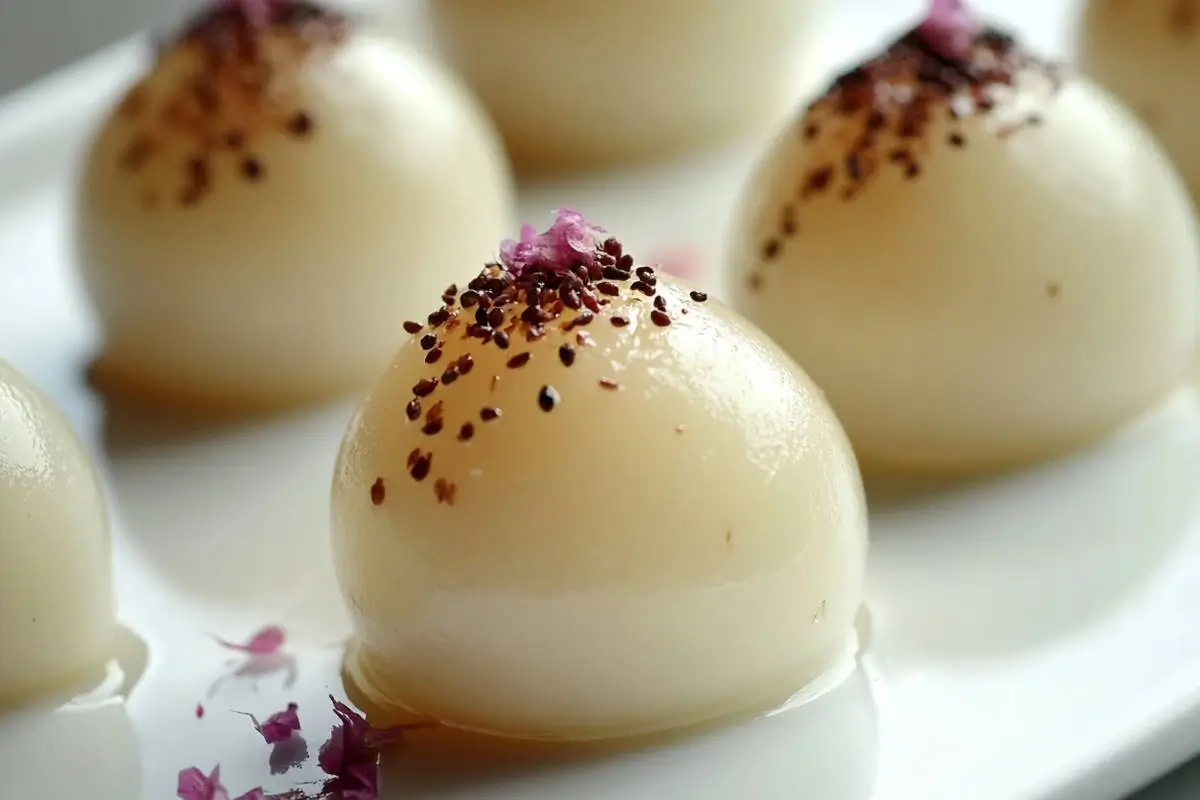
East Asian sweets have a wide range of tastes and textures. They show off the unique food traditions of the area.
You will learn about Chinese and Japanese desserts here, showing the skill and complex methods used.
Chinese Desserts: Sweet Beginnings
Chinese desserts mix many flavors, often using seasonal items and cultural themes. The mooncake is one well-known dessert, eaten at the Mid-Autumn Festival.
These round cakes have sweet fillings like lotus seed or red bean paste.
They are especially loved during family gatherings.
Japanese Desserts: Wagashi and Beyond
Japanese sweets, especially wagashi, are known for their beauty and ties to the seasons. They use natural items to make treats that look as good as they taste.
A lot of Asian dessert recipes come from different places, showing old and new ideas.
You can find everything from Yuanxiao at the Lantern Festival to mochi muffins. These desserts share the rich cultures of East Asia.
Dessert | Origin | Main Ingredients | Significance |
|---|---|---|---|
Mooncake | China | Lotus seed paste, red bean paste | Mid-Autumn Festival |
Tangyuan | China | Glutinous rice, sesame paste | Celebration of family reunions |
Sakura Mochi | Japan | Glutinous rice, red bean | Cherry blossom festival |
Hanami Dango | Japan | Rice flour, sugar | Spring celebration |
East Asian sweets are loved all over for their tastes and looks. They mix old and new, exciting dessert fans everywhere with each bite.
Delightful Asian Dessert Recipes You Can Try
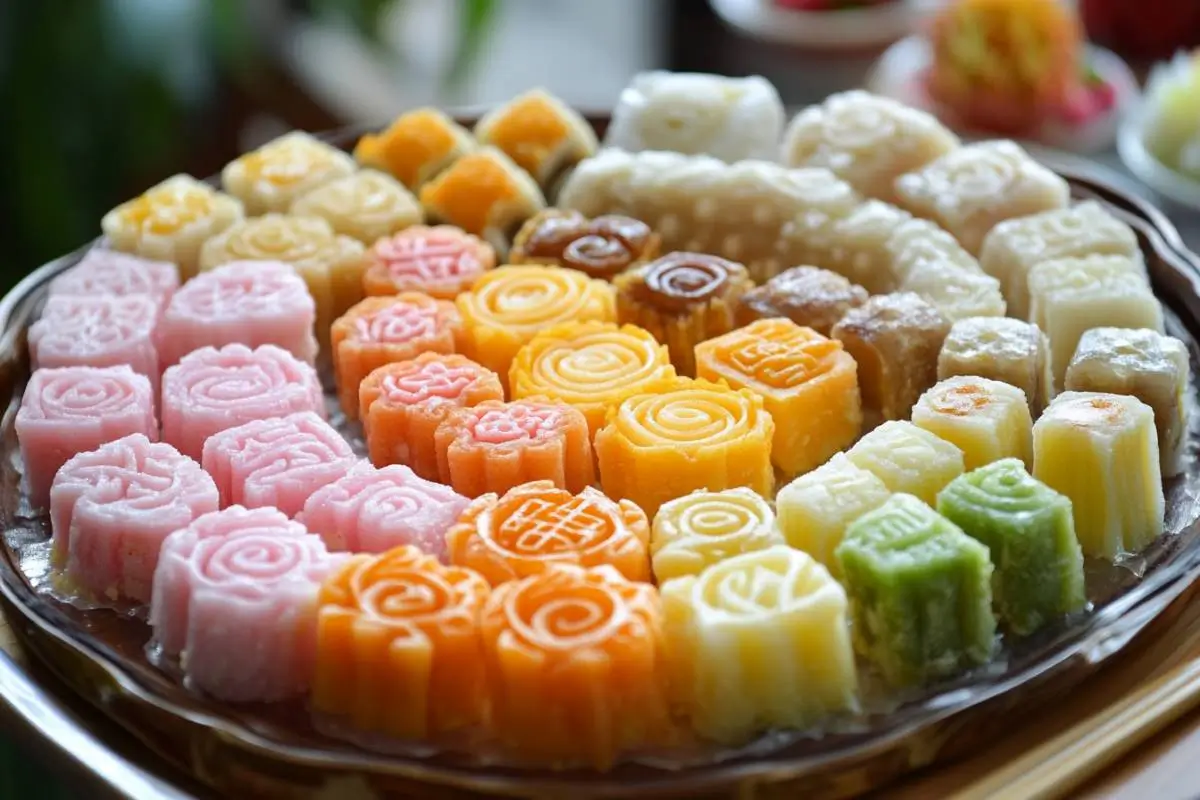
Asian desserts are full of exciting flavors and textures. They are perfect for your next cooking adventure. This section shows you fun Asian dessert recipes to try at home. You'll find step-by-step guides for popular treats and healthier options.
Infuse your cooking with the bold and diverse flavors of Asia.
Step-by-Step Guides to Popular Treats
Explore a variety of favorite Asian dessert recipes. Each one is designed to be a joy to make, mixing authenticity with simplicity. Here are some top choices:
Healthier Alternatives in Sweet Delights of Asia
As you explore these recipes, look at healthier dessert options that keep the joy of traditional sweets.
Using natural sweeteners or fresh fruits can change your desserts. Here are some wonderful choices:
Trying these recipes not only cures your sweet craving but brings Asian dessert flavors to your home.
Each guide is made to inspire both confidence and creativity in your cooking.
Embracing Asian Fusion Desserts
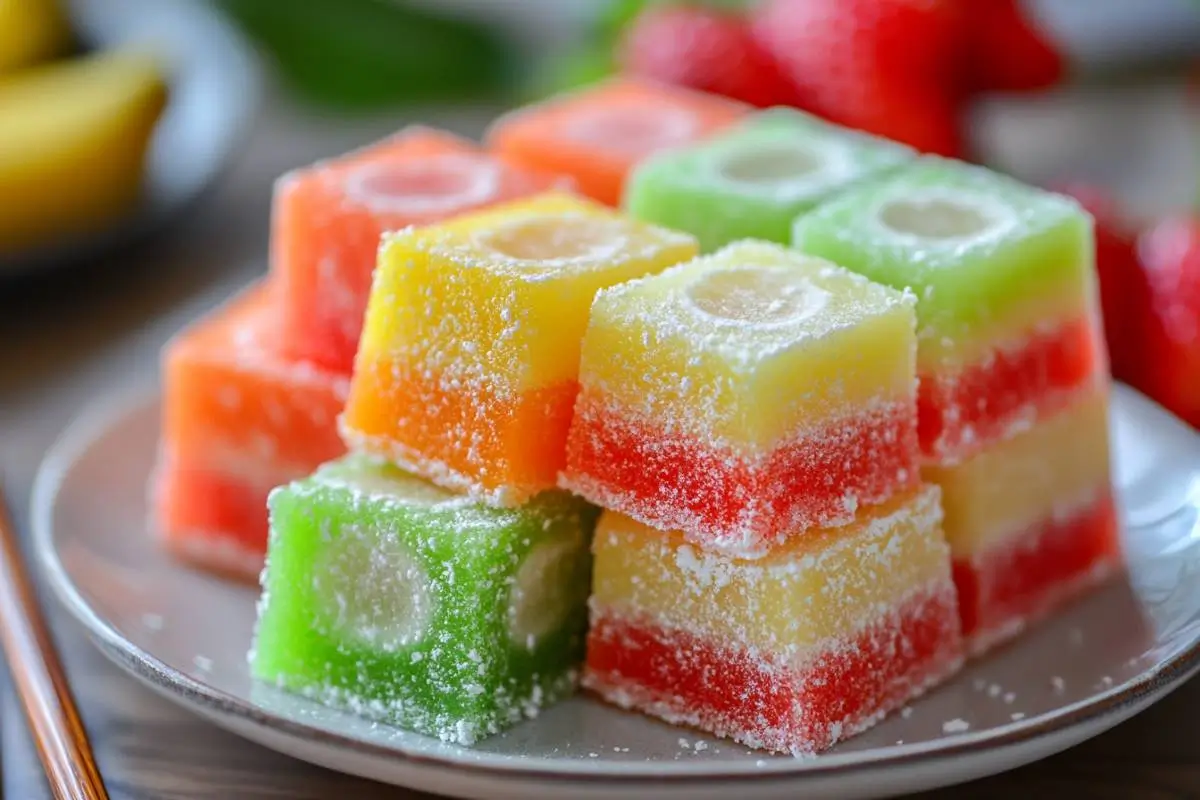
Asian fusion desserts blend global flavors in a creative way. They invite you to try surprising and delightful mixes.
Think of treats like lychee panna cotta and matcha macarons. These show how different tastes can make something special.
Bringing Global Flavors Together
Asian fusion desserts mix ingredients you might not expect. This mix makes flavors more exciting. Chefs use matcha, lychee, and red bean to make desserts that many people love, including kids.
Creative Takes on Traditional Sweets
Classic sweets get a new twist in Asian fusion. Social media helps spread new dessert ideas fast. You get to try things like:
This mix of old and new flavors can spark your imagination. As you try these desserts, you might see endless possibilities.
Dessert | Main Flavors | Pairing Suggestions |
|---|---|---|
Lychee Panna Cotta | Lychee, Coconut | Passion Fruit Sauce, Mint |
Matcha Macarons | Matcha, Almond | White Chocolate Ganache |
Mango Sticky Rice Spring Rolls | Mango, Coconut | Coconut Cream Dip |
These Asian fusion desserts are not just a treat for the eyes but also inspire you to try new things.
They show that tradition and new ideas can blend beautifully.
Conclusion
The journey through Asian desserts is both exciting and beautiful. It mixes old and new sweet treats. You can try traditional snacks like mochi and modern ones like vegan desserts at Pam Pam.
Enjoying Asian cuisine is more than just eating. It's about learning the complex ways and tastes that make each dessert special.
Now is the perfect time to try making dishes like hotteok at home.
Dishes like pandan coconut custard with roti are getting popular. This lets you dive deep into the flavorful world of Asian sweets.
The popularity of Asian desserts keeps growing. Now, you can find them in restaurants or make them in your kitchen. It's a wonderful chance to explore the unique tastes of Asian cuisine.
FAQs
Mango sticky rice from Thailand, mochi from Japan, and kue lapis from Indonesia are popular. These treats use unique ingredients and methods. They are cherished in their cultures.
Asian desserts are key to festivals. Mooncakes are a must for the Mid-Autumn Festival in China. Dango is loved during Japan's hanami. These sweets carry deep cultural meaning and celebrate the seasons.
Unique ingredients like ube, pandan, matcha, and coconut are in Asian desserts. They add different flavors and textures. This creates a rich flavor world.
Yes! For healthier Asian desserts, use natural sweeteners or fruits. Replace sugar with honey in Vietnamese mochi. Or use whole grains in mango floats. Still delicious!
Asian fusion desserts mix Asian flavors with Western techniques. Think matcha macarons and lychee panna cotta. They offer new tastes and celebrate dessert diversity.

